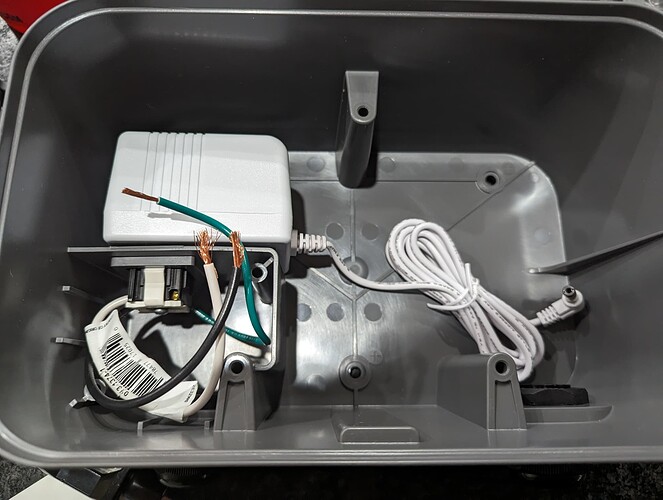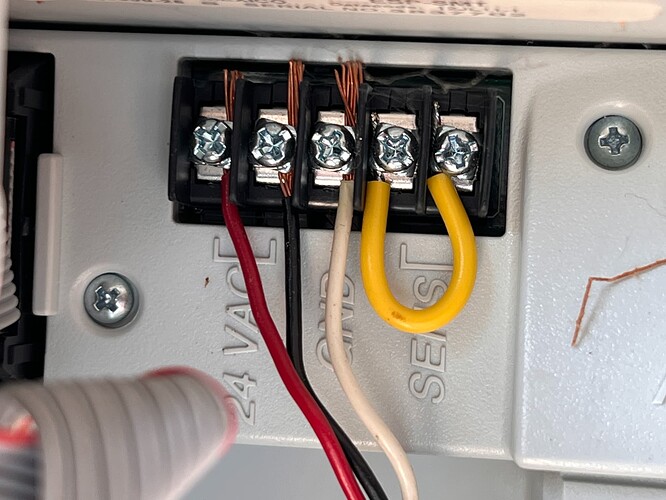I currently have a Hunter Pro-HC(1st picture )that I am swapping out to a Rachio 3. If I’m right then all the zone wires just move straight over, and the white COM wire goes to a C-port on the Rachio.
I would like some confirmation on the AC wiring on the left. I’ll be using the Rachio outdoor enclosure(2nd picture). I see that I can plug the Rachio into the enclosures built-in plug if I just wire the plug to AC power. And then the barrel end of AC just connects right to the Rachio PWR IN jack…
Do I just splice (using included wiring nuts) one yellow wire to the white wire, one to the black, and green to GND?
For context, the wire in the bottom right looks to just be a long pigtail or more likely a cut/spliced extension cord that the installer ran up the wall, under the soffit and down to the corner where the 3 prong end connects to a plug on the underside of the eve. That extension cord is actually bright red, but as you can see in the photo, the sun has greatly faded the cord jacket on the wall. I’m thinking it may be time to replace that with a proper outdoor solution. But I’m not too worried about getting the Rachio hooked up as-is first.
Thanks everyone! I’ve already read lots of great information & the community was a big factor in me deciding to make the switch. The Hunter Pro HC is actually a pretty great unit, hence why I haven’t made the swap until now, despite having the itch. I have most of our home automated and Rachio seems to have far better integration options. But the biggest downside of the Hunter that really put me off was their subscription model for certain features is ridiculous. The software and controller are actually pretty great, not Rachio level polished, but very clean and functional. Both the Rachio and Hunter have certain pros over the other. But you have to pay $60/year for the ability to use more the. A SINGLE weather station? That is absolutely ridiculous! And not to mention I seemed to have had some issues with weather before where the controller ran after extensive rain and the parameters for not watering should have definitely been met. I actually just found out about this plan when looking for more information. When I previously searched I only ever found that I could purchase a contractor account for $130/year. But even if I wanted to pay that ridiculous price I’m just a homeowner with a single property and the only feature I needed is multiple weather stations. It’s a shame that such great hardware and software is ruined by locking features behind a paywall. Hunter is obviously more geared towards installers, but they’re really missing out by not catering a little more to the capable homeowners, DIY’s, and folks just looking to upgrade their old controllers. Maybe that business model worked back in the day, but now thanks to the innovation brought to us by Rachio & other companies there’s just not a lot of reason for non-contractors to continue using the Hunter controllers.



